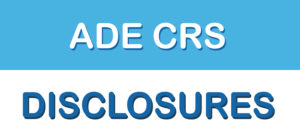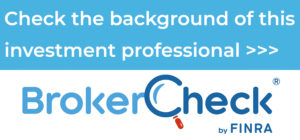Lessons In Money
How to help kids develop financial awareness.
Children are like wells waiting to be filled with information—and information about money can be a helpful topic to begin exploring at a young age. Behavioral scientists at Cambridge University have encouraged parents to start teaching their kids about money as early as 3 years old (1), when they’re starting to learn their numbers and discover the difference between wants and needs.
Your kids see you buying things, but does your preschooler understand where money comes from—and the different ways it’s used or saved? Does your 10-year-old know how to compare prices on that toy he’s saving for? Does your teenager have a savings account to earn interest on earnings from part-time work—and upcoming graduation gifts?
If not, it might be time to have a conversation. The earlier kids understand how and why money is earned, saved, and spent—the better their own money skills are likely to be.
Does an allowance help or hurt kids’ understanding of financial matters?
Should you give your kids an allowance or not? The answer depends on whom you ask. For example, an article by Ramsey Solutions says your kids don’t need an allowance—they need a commission (2) for doing work to earn money.
Many families give their kids allowances that are tied to chores, so the fine print about whether it’s a commission or an allowance is up to you. If you incorporate chores and other expectations (such as grades) into the allowance, it’s less likely to be considered an “entitlement,” and your kids learn the relationship between work and pay. What you don’t want, though, is for your kids to get the idea that chores always deserve pay instead of counting as their contribution to the family.
How much should an allowance be?
If you choose to give your kid an allowance, consider what might be an age-appropriate amount to help your kid meet any goals you’ve worked out together. Also, look at your own budget and determine how much of an allowance you can comfortably afford. Some parents choose a weekly sum that is equal to their kid’s age, and others choose a weekly sum that is half their kid’s age. Others choose a monthly sum that is determined by their kids wants and needs—and any terms you’ve included.
After you’ve decided if and when you’ll pay an allowance—and how much—make sure your kid understands all the terms. For example, is it tied to grades, chores, behavior—or something else? Is there a requirement to add a portion of their allowance to a donation jar or a saving’s jar? Are your older kids expected to use part of their allowance to buy their own necessities?
Other options—and the most important consideration
Adding coins and bills to piggy banks or to glass jars can be a helpful lesson in math, and a source for great conversations with them how much they want to save, what they’re saving for, and whether they want to donate any of their cash to charity.
If they’d rather not have coins and bills collecting in piggy banks or jars, you may want to look into cashless app options such as BusyKid, iAllowance, or Greenlight—if you think your kids are old enough and have a phone or tablet. You may also want to shop around for a kid-friendly bank account that doesn’t have a minimum balance requirement or will waive fees. If you find one, take your kid with you to open the account together and turn the experience into a teachable moment.
Use your experiences—good and bad—to teach lessons in money
Despite the growing number of online money apps and guidance, the most important resource for teaching your kids about money and finances is you. They’ve watched you mulling over decisions to spend money or not to spend money. Start a conversation. Be transparent. Help them to learn from your mistakes, successes and processes—just as you have. Remember that every family is different, and you should choose the option the works best for you, your kids, and your family overall.
Educational resources
The Consumer Financial Protection Bureau has helpful resources you may want to explore— including answers to common money questions asked by kids and downloadable books for kids about the Money Monsters. A good starting point is the Money as You Grow guide.
Thanks for checking out the blog.
Gregory Armstrong , CFP®
Sources
(2) Ramsey Solutions: Why Your Kids Don’t Need an Allowance
This material is for general information only and is not intended to provide specific advice or recommendations for any
individual. There is no assurance that the views or strategies discussed are suitable for all investors or will yield positive
outcomes. Investing involves risks including possible loss of principal.
This material was prepared by LPL Financial. Securities and advisory services offered through LPL Financial (LPL), a registered investment advisor and
broker-dealer (member FINRA/SIPC).
Insurance products are offered through LPL or its licensed affiliates. To the extent you are receiving investment advice from a separately registered independent investment advisor that is not an LPL Financial affiliate, please note LPL Financial makes no representation with respect to such entity.
Securities and insurance offered through LPL or its affiliates are: 









